Types of materials and their features
Bed linen is sewn from different materials: durable calico, delicate satin, soft flannel, etc. Below we will analyze the advantages and disadvantages of each option.
Take a look recommendations for choosing the size of bed linen.
Bamboo
Bamboo threads are obtained from the stems and leaves of this fast-growing plant, so the first advantage of the fabric is environmental friendliness. In the production of bedding for greater softness, the fabric is diluted with fibers of cotton, flax or synthetics - the final properties of the material directly depend on the additives.
Bamboo fabric is hypoallergenic, hygroscopic and comfortable in feeling: it perfectly regulates temperature, protecting against overheating and hypothermia. It has practically no minuses, except that it is worth noting the high cost of the sets.
Calico
Dense coarse calico is used for sewing bedding for many years. The composition consists exclusively of cotton threads; natural dyes are mainly used for dyeing: therefore, the material is environmentally friendly and safe.
Despite the fact that the texture may seem too simple to many, coarse calico bedding has more than once proven its durability. Pillowcases, sheets, duvet covers can be washed at high temperatures, bleached, boiled, so they can often be found in hospitals and other government institutions.
Batiste
The most delicate cambric is one of the lightest materials for bedding. To obtain a weightless fabric, the finest threads of linen and cotton are weaved together: the fabric feels like natural silk, but not slippery and not shiny.
To preserve its beauty, cambric can be washed only at a low temperature (up to 35 degrees); this should be done on a delicate mode in a typewriter or by hand.
Biomatin
The relatively new fabric belongs to the eco category. Biomatin is made from 100% cotton without the addition of synthetic threads. Instead, the fibers are impregnated with a special cream, which increases the density, strength, durability of bed linen.
Due to the fact that biomatin is able to perfectly absorb and retain colors, bright drawings are often applied to it - from 3D and abstraction to thematic prints for children and youth.
Viscose
The second name for viscose is rayon, but it only partially reflects the properties of this fabric for bedding. Viscose received an alternative name due to the processing method: the process resembles the production of silk threads, but unlike natural silk, silkworm larvae do not participate in it. Instead, a special technique and precisely calculated reagents.
The final properties of the fabric depend on the composition. Distinguish:
- modal - without impurity;
- micro-oil - cellulose with polyester;
- acetate - cellulose acetate.
Jacquard
The special weaving, invented by Joseph-Marie Jacquard back in 1801, still has no equal. Jacquard is used for the manufacture of tapestries, furniture fabrics, clothing, bed linen.
Elegant fabric has advantages not only in appearance: in addition to its beauty, it does not wrinkle, allows the skin to breathe, and keeps it warm.
Linen
2 things about linen bedding are known to everyone: the material is 100% environmentally friendly and extremely susceptible to wrinkling. Linen does wrinkle a lot, but lately its natural imperfect appearance has become more and more popular.
Those who are ready to put up with a crumpled bed get a bed that is as pleasant to the body as possible, with a unique property of temperature regulation. In the heat, flax is cold, in the frost it is warm.
Lavsan
Polyester fiber is made from oil refining waste. Does not wrinkle, does not fade, does not get wet, while it is inexpensive. To make linen, lavsan is mixed with cotton: the resulting material is practical and durable.
Mahra
Terry towels are not the only ones: a thin fleecy fabric is often used to make mattress covers or sheets. Terry textiles stretch perfectly, retains heat, they do not need to be ironed, they can be machine washed.
Microfiber
The first disadvantage of microfiber is unnaturalness. It contains cotton, but besides it - polyamide and polyester. The latter impart softness to coarse plant fibers, making them more practical and easier to care for.
Microfiber is inexpensive, but despite this, pellets do not form on it, it almost does not wrinkle and does not shrink.
Poplin
One of the best options for cotton bedding is poplin. The linen from it turns out to be dense, but soft and comfortable. Poplin has the ability to allow air to pass through, which makes resting on the bed more comfortable and your dreams brighter.
Percale
How high-quality and wear-resistant fabric becomes clear as soon as you find out that once it was used to sew ... sails. Today, the material is almost never used in shipbuilding, but percale bedding has a large number of fans around the world. Percale is 100% cotton, easy to care for, breathable and moisture-permeable, and has an average cost.
Polycotton
Another cotton blend with added polyester. Synthetics in the material can be up to 85% - the more there is, the cheaper the bedding, but the less it will last.
The price in comparison with natural fabrics is not high, however, polycotton accumulates static electricity, and can roll off over time.
Ranfors
The fabric in many ways resembles coarse calico, but differs from the "sister" in a denser weaving of less thick cotton threads. Sleeping on a bed made of ranfors is best in the heat or during the heating season - it stays cool at any temperature, allowing you to feel comfortable all night long.
Satin
Smooth satin makes you fall in love with its characteristic shine, pleasant texture and bright color. Satin is also called cotton silk, which fully reflects its main characteristics.
The advantages of the fabric are practicality (almost no wrinkling), durability (withstands up to 200 washes!), Heat capacity (warms up in cold weather). The disadvantages are relative - some sleep on satin linen is hot and slippery. In general, the bill is more likely in favor of satin bedding.
Chintz
Thin cotton fabric is not very popular today, primarily due to its low resistance to tearing, creasing and a high degree of shrinkage. In other respects, chintz bedding is not inferior in properties to other cotton fabrics - coarse calico, ranfors, poplin.
Tencel
The first on our list was bamboo, and tensel is its eucalyptus cousin. The production of canvas is almost waste-free, safe for nature. The fabric is hypoallergenic, breathable and pleasant to the touch. There is only one bad thing - it is not easy to take care of the bed from Tencel.
Flannel
The main distinguishing feature is the fleece - it gives the flannel its characteristic softness. Plus, flannel is easy to care for, durable and inexpensive. But when wet, it becomes very heavy and dries for a long time.
Silk
While some dream of elegant silk sheets, others dislike silk bedding because of its slipperiness, shine, and high cost. Both sides are right - silk has both pros and cons.
What is the best fabric?
It is impossible to definitely call one material the best, it all depends on which parameters are important for you and which are secondary.
Tactile sensations
Natural linen, cotton (percale, poplin, coarse calico), flannel are most pleasant to the body. Many people like soft satin, cambric.
Strength
Strength can vary even within one type of fabric, it is measured in g / m2 and is indicated on the package. The higher the number, the stronger the material. The most dense are microfiber, poplin, jacquard, bamboo.
Retains appearance
Bamboo, satin, biomatin, jacquard does not wash and does not fade.
Does not wrinkle
Fabrics with the addition of synthetics wrinkle least of all: satin, microfiber.
Ease of maintenance
Most cotton fabrics do not require special attention when washing: percale, poplin, calico, ranfors.
Environmental friendliness
Pay attention to the composition: 100% linen, cotton, bamboo, eucalyptus on the tag guarantee maximum naturalness.
Price / quality ratio
Of course, expensive silk or jacquard justifies its price. But if we talk about the middle price category, the leaders are poplin, chintz, percale, lavsan.
A final tip: if you are in doubt whether you will sleep comfortably on your underwear, open the packaging in the store and touch the fabric. By the tactile sensation, it will immediately become clear whether this bed is suitable for you.

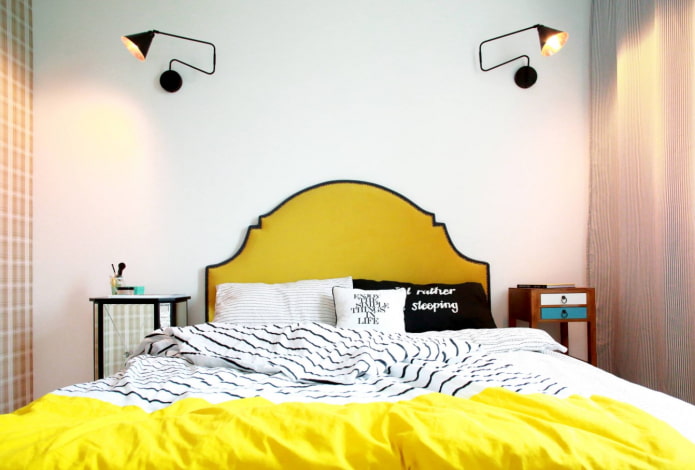
 10 practical tips for arranging a small kitchen in the country
10 practical tips for arranging a small kitchen in the country
 12 simple ideas for a small garden that will make it visually spacious
12 simple ideas for a small garden that will make it visually spacious
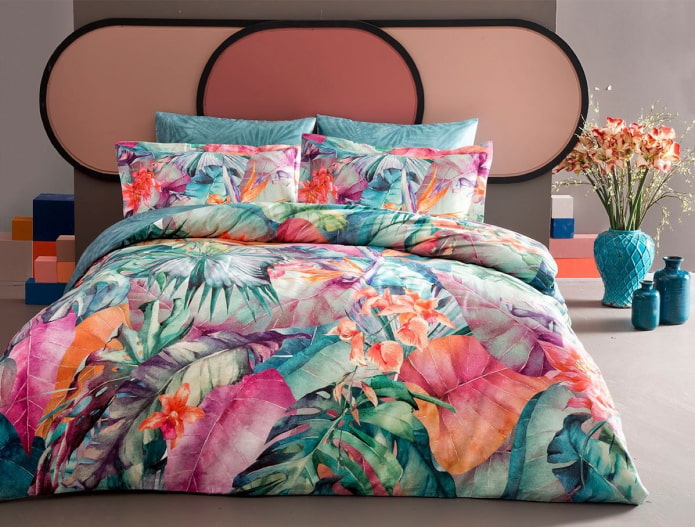
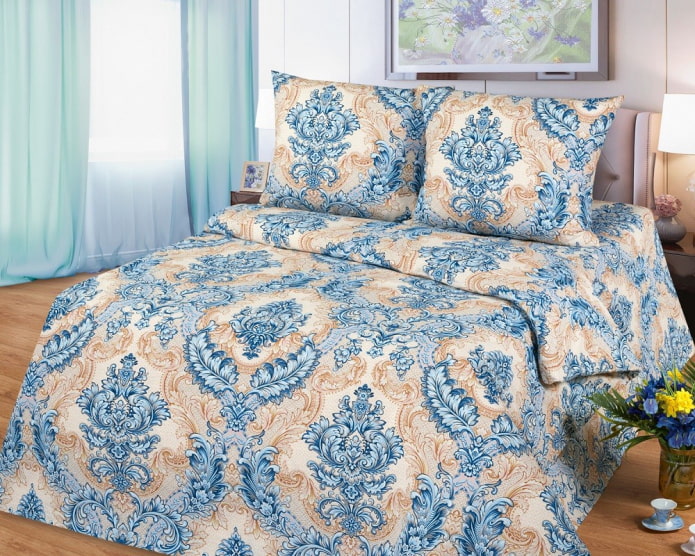
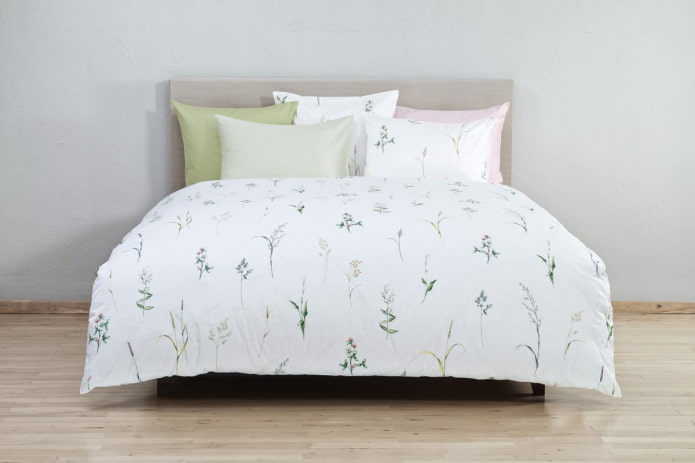

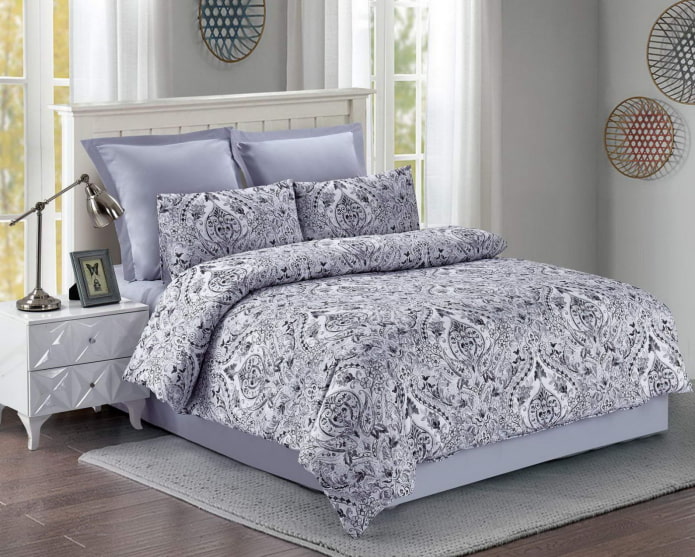
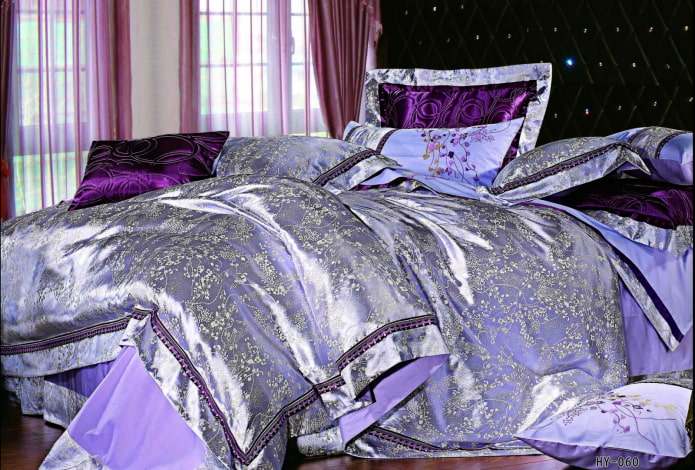
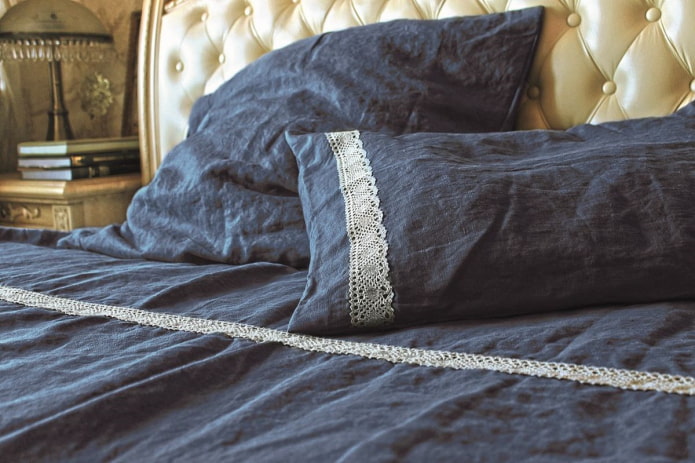
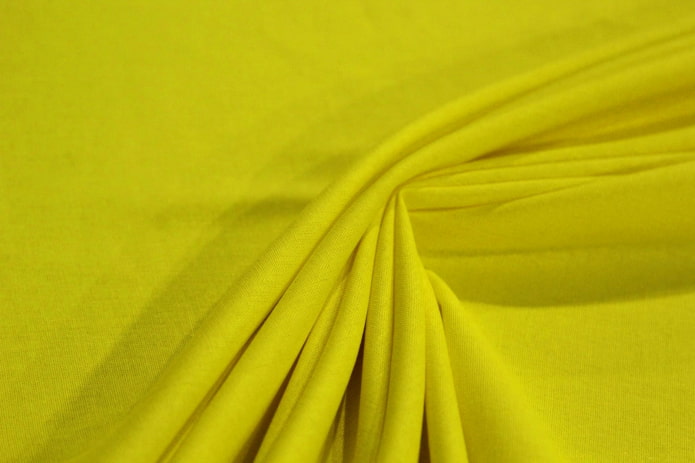
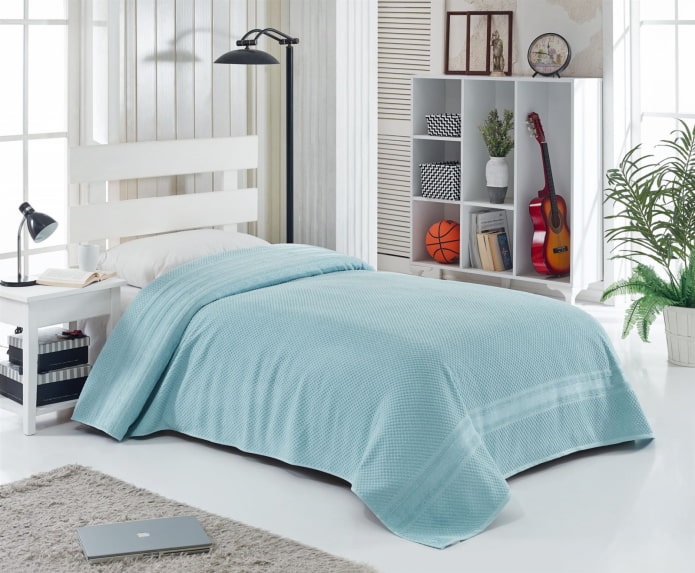
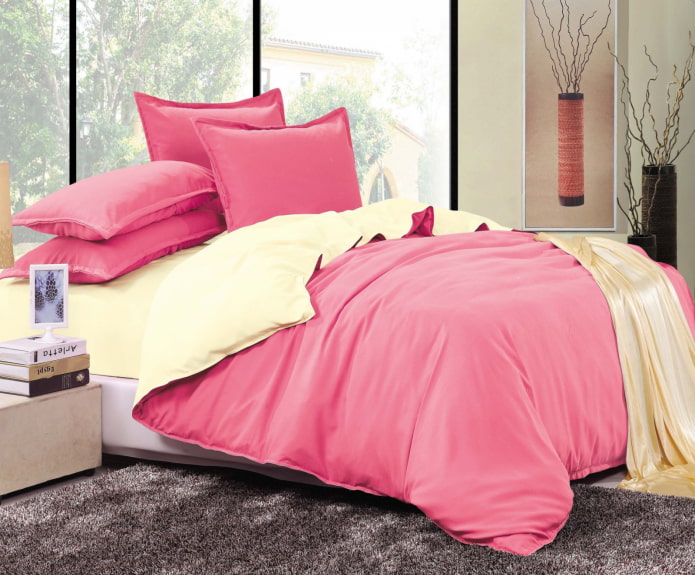
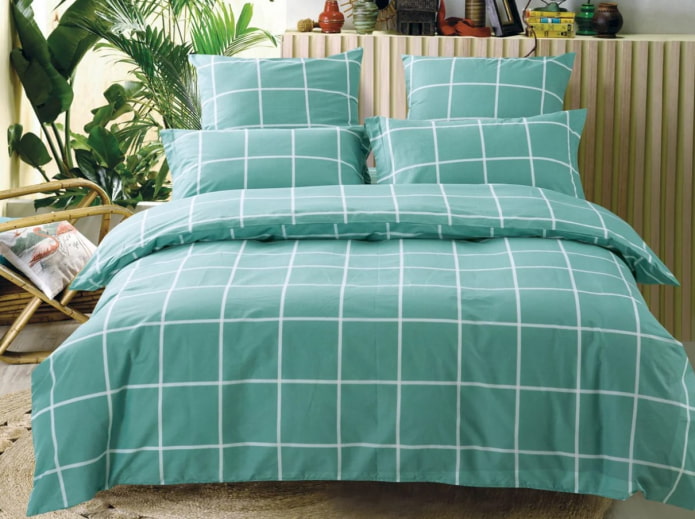


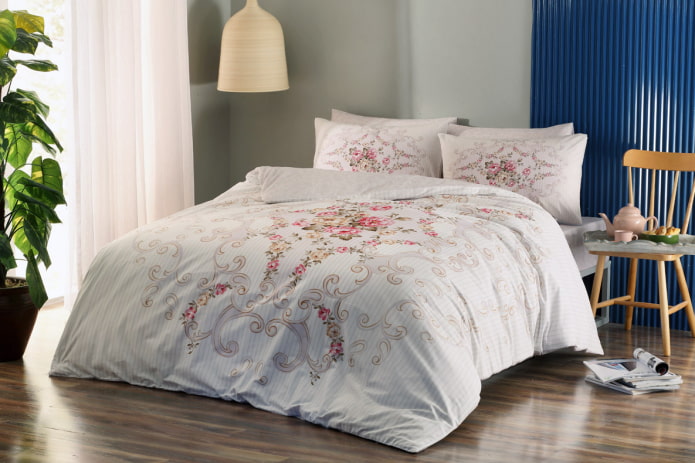
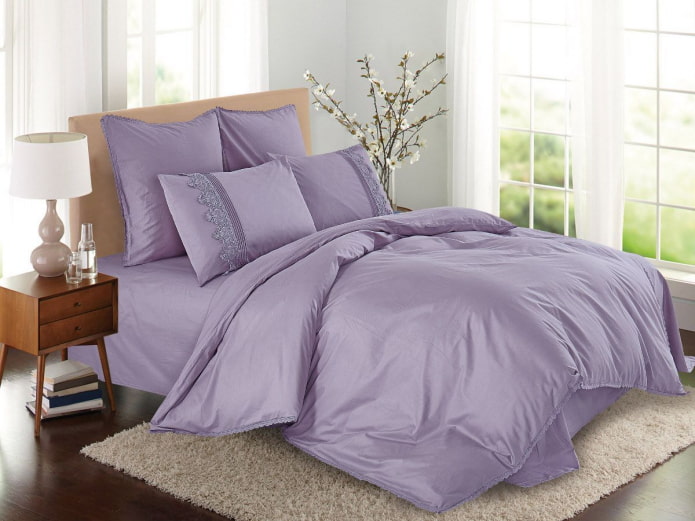

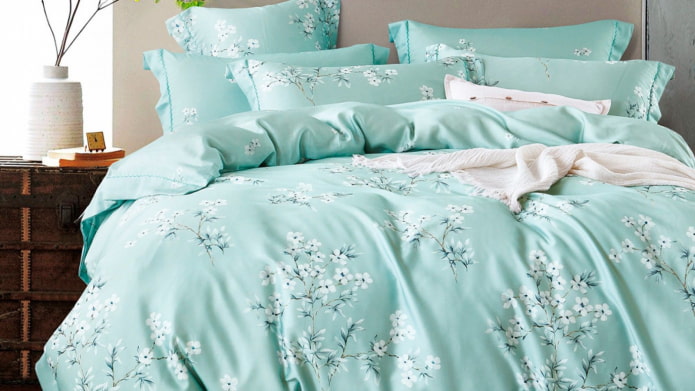

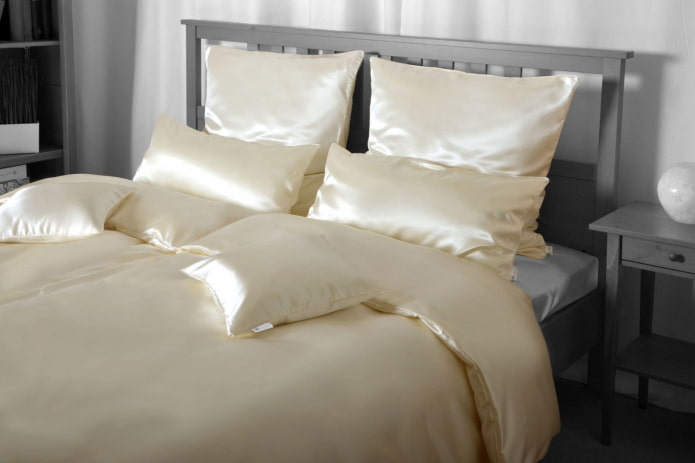
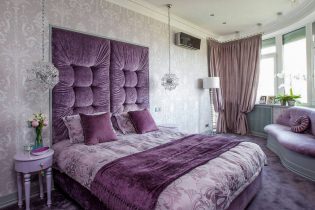 Wall design in the bedroom: choice of colors, finishes, 130 photos in the interior
Wall design in the bedroom: choice of colors, finishes, 130 photos in the interior Bedroom design with gray wallpaper: 70 best photos in the interior
Bedroom design with gray wallpaper: 70 best photos in the interior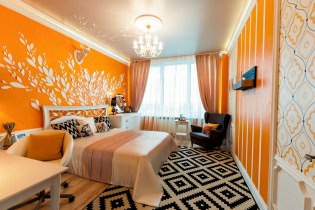 Bedroom design in orange tones: design features, combinations, photos
Bedroom design in orange tones: design features, combinations, photos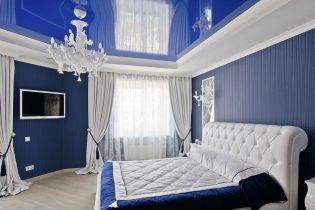 Stretch ceilings in the bedroom: 60 modern options, photo in the interior
Stretch ceilings in the bedroom: 60 modern options, photo in the interior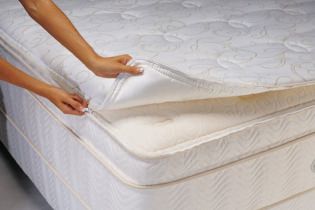 The choice of an orthopedic mattress: features, types of fillers, sizes
The choice of an orthopedic mattress: features, types of fillers, sizes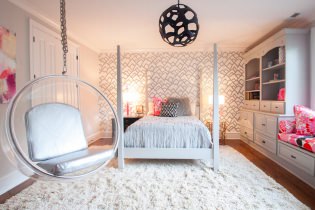 Bedroom design for a girl: photos, design features
Bedroom design for a girl: photos, design features